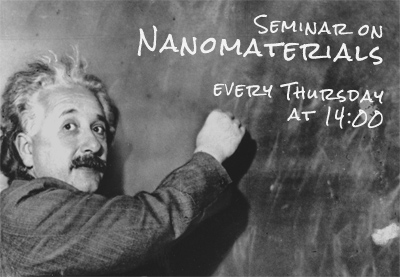Nanoseminar
Group of Structure analysis at the Department of Condensed Matter Physics
of Charles University and MGML has a pleasure to invite you to attend the seminar on nanomaterials: Physics, Technology, Applications
on 18th April 2024 at 14:00
at Faculty of Mathematics and Physics of Charles University, Ke Karlovu 5, 121 16 Praha 2
Lecture room F2
Martin Setvín
Department of Surface and Plasma Science, Charles University, Prague, Czech Republic
Noncontact Atomic Force Microscopy: From imaging atoms to manipulating single electrons
Martin Setvín » Noncontact Atomic Force Microscopy: From imaging atoms to manipulating single electrons
Department of Surface and Plasma Science, Charles University, Prague, Czech Republic
Location: F2
Noncontact atomic force microscopy (nc-AFM) has recently proven to be a powerful tool for characterizing surfaces of complex materials.1 In this talk I will first discuss the capabilities of achieving atomic resolution and chemical identification of surface atoms, using a challenging system of copper oxide thin films. Copper oxides play a key role in catalysis of small organic molecules, and they form a plethora of structures with a-priori unknown configurations and stoichiometry. Here the system is resolved by a combination of nc-AFM and theoretical methods based on a combination of density functional theory and machine learning.
The second part of the talk will focus on possibilities of investigating electrons self-trapped in the crystal lattice, so called polarons.2 Such charge carriers can move to adjacent lattice positions, provided they are given certain activation energy. Polarons play a key role in many applications and materials properties, such as electrical conductivity, optical properties, catalysis and photocatalysis, and they stand behind exotic properties such as colossal magnetoresistance or high-temperature superconductivity. The successful imaging of polarons in hematite Fe2O3 and SrTiO3 will be shown, and the new possibilities offered by this technique will be discussed.
References:
[1] Giessibl, F. J. The qPlus sensor, a powerful core for the atomic force microscope. Rev. Sci. Instr. 90, 011101 (2019).
[2] Franchini, C., Reticcioli, M., Setvin, M. & Diebold, U. Polarons in Materials. Nature Reviews Materials 6, 560-586 (2021).
*corresponding author: e-mail: martin.setvin@matfyz.cuni.cz


